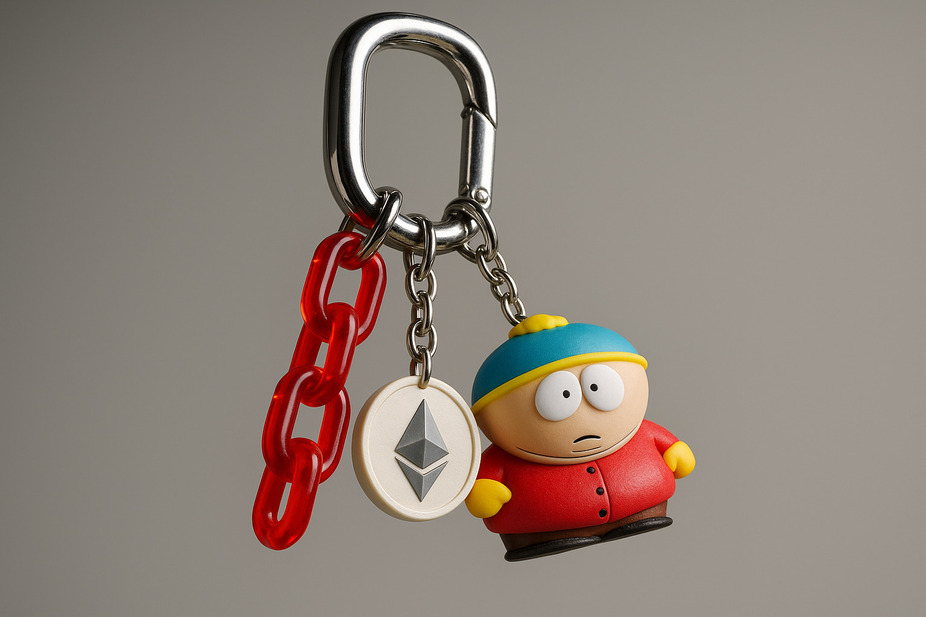Popular cryptos
Tether
Download Ironwallet app and get tool for making transaction without network fee
About Tether
Tether is the company behind one of the earliest and most widely-used stablecoins, cryptographic assets designed to have reliable value instead of volatility. Launched in 2014, its USDT coin aims to bring stability by using blockchain while pegging value to fiat currencies like the dollar. Tether issues USDT coins in exchange for U.S. dollars it claims to keep in reserves to collateralize issued tokens 1-to-1, allowing users to avoid crypto’s notorious price swings. USDT makes up an average 50% of daily Bitcoin transactions and underpins over $50 billion in trading volume due to its liquidity and convenience as a dollar stand-in across exchanges. However, questions on whether Tether truly holds sufficient reserves have led to investigations, lawsuits, and billions in related trades. Despite controversies, USDT remains deeply integrated in crypto markets for now due to the liquidity it offers. But confidence risks further eroding if accountability and transparency questions continue swirling around its reserves backing.
History of Tether
Tether’s history begins in 2014, originating from the idea of integrating blockchain technology and traditional currency. Initially known as “Realcoin”, it was envisioned by tech entrepreneurs Brock Pierce, Craig Sellars, and Reeve Collins. The aim was to bridge the gap between fiat and digital currencies by creating a stablecoin – a cryptocurrency pegged to a stable asset, in this case, it was the US dollar.
By November of 2014, after rebranding to “Tether”, the company started its operation providing a way for users to use the blockchain to make transactions with an approximate value to USD, hence offering stability in the highly volatile cryptocurrency market.
Tether has undergone several controversies and crises, including hacking attacks and legal issues. Amid these adversities, Tether has maintained a significant role in the cryptocurrency market due to its functionality as a stablecoin, despite facing competition with other emerging stablecoins.
The Concept of Stablecoins
Unlike conventional cryptocurrencies, stablecoins are designed to have minimal price volatility. They achieve stability by pegging their market value to some external reference asset, most commonly a major fiat currency like the US dollar. For every unit of a stablecoin token in circulation, there must be one unit of the reference asset held in reserve as collateral. This allows stablecoins to maintain consistent purchasing power, acting as a reliable medium of exchange.
By mitigating the extreme volatility typical of cryptocurrencies, stablecoins intend to perform the functions of traditional money. They provide a less risky way of storing value, denominating contracts, and facilitating transactions on blockchain networks. The viability of any stablecoin depends on transparency and trust in the reserves backing token issuance. Controversies can arise over reserve adequacy and composition. But if operated properly, stablecoins promise to bridge the advantages of crypto with the stability users expect from currencies. Tether (USDT) as the dominant stablecoin has brought this vision closer to reality despite its flaws. Further innovation aims to minimize volatility risks even further through better auditing and decentralization.
How Tether Works
Tether issues USDT digital tokens in exchange for deposits of corresponding fiat currency it claims is held in reserves. Users can later redeem USDT to withdraw matching fiat currency.
Tether and Fiat Currency BackingTether claims each USDT in circulation is backed 1-to-1 by dollars held in company reserves for redemption upon request. This fiat collateral model separates it from algorithmic stablecoins that aim for price stability via technical means alone. Tether asserts reserves equal or exceed issued USDT.
Issuing and Redeeming TetherThose looking to purchase USDT tokens can deposit U.S. dollars with Tether to have an equal value of USDT released to them, with the reverse occurring upon redemption. However, some have found redemption requests taking longer than advertised.
Role of Tether in Crypto Markets
As the most widely used stablecoin, Tether (USDT) plays an outsized role in cryptocurrency trading and finance. Its consistent $1 valuation provides crypto traders shelter from the stormy volatility of the crypto markets. Exchanges lacking relationships with traditional banks rely on USDT to enable deposits, withdrawals, and serve as a trading pair. This gives crypto investing public accessibility it would otherwise lack.
Additionally, Tether’s liquidity allows large crypto-asset holders and institutions to rapidly transfer funds between exchanges to take advantage of arbitrage opportunities. The seamless flow of USDT between Asia, Europe and America integrates a global crypto trading ecosystem. Yet Tether has even more profound implications. It is a gateway between the legacy financial system and the emerging domain of decentralized finance (DeFi) applications. From collateral in decentralized lending to payments in layered smart contract protocols, Tether unlocks financial functionalities for cryptocurrencies.
While controversial at times, Tether has undeniably propelled crypto’s evolution as a financial system. Crypto commerce depends on stability and liquidity – two pillars Tether helped realize but did not invent flawlessly. Nevertheless, later stablecoins owe a debt to Tether’s ascendancy in facilitating trustless finance.
Controversies Surrounding Tether
Tether is no stranger to controversy. It has faced heat on multiple fronts, including its currency reserves and regulatory actions against it. Despite its importance, uncertainty around USDT undermines its use as a reliable stablecoin.
Questions About Reserves Backing USDTTether’s business model depends on maintaining full reserves to back all USDT in circulation 1-to-1 with fiat currency. However, for years observers have questioned if Tether truly holds sufficient dollar reserves. Tether has avoided official audits regarding its reserves. In 2021, Tether paid an $18.5 million fine to the New York Attorney General and was banned from operating in the state over claims of just 75% reserves compared to issued USDT. It also admitted to lending client funds to third parties. With outstanding questions on appropriate collateralization, it calls into question the 1:1 fiat backing upon which Tether’s model is built.
Investigations and LawsuitsIn addition to scrutiny from New York’s Attorney General, Tether has also faced inquiries from the U.S. Justice Department, IRS, and CFTC regarding whether USDT should be considered an unregistered security or have illegally manipulated crypto markets. The EU has also barred some Tether services over money laundering risks. Tether paid fines in these cases but avoided admissions of wrongdoing. Lawsuits accusing Tether operations of fraud have also emerged. Regulatory moves against Tether can undermine faith in its operations.
Comparing Tether with Other Stablecoins
As one of the earliest stablecoins, Tether’s USDT remains a dominant player in the market, but it is far from the only option now. Major competitors have emerged looking to outdo Tether with greater transparency and accountability around their currency reserves backing tokens in circulation.
For example, USD Coin (USDC) rapidly gained ground as investors shifted preferences due to its regular attestations showing USDC is fully backed. Unlike Tether, Circle publishes monthly reports from auditors confirming USDC reserves match tokens in circulation. Similarly, Paxos issues reports frequently confirming its Paxos Standard token remains fully collateralized. Accountability around collateral has become a key battleground.
Other top stablecoins like DAI and FRAX differentiate themselves by using crypto assets as collateral rather than direct fiat reserves. And centralized offerings now compete with decentralized stablecoin models like TerraUSD which relied on algorithms rather than asset holdings to try maintaining $1 pegs.
While Tether enjoys first-mover advantage, competitors focused early on transparency now issue over half of stablecoin value. As questions remain around Tether’s reserves, users may continue shifting toward alternatives perceived to take stability promises more seriously by proving holdings.
Impact of Tether on Crypto Prices and Liquidity
The liquidity Tether brought to crypto markets significantly benefitted overall trading volumes and prices. Its convenience as a dollar stand-in has made it a ubiquitous building block across exchanges and blockchain projects. However, its central role also means Tether risks threaten crypto stability more broadly. For example, any loss in market trust leading to rapid USDT selling could trigger a liquidity crunch across exchanges and crash prices for other major cryptocurrencies.
Future Outlook for Tether
Tether continues working towards redeeming USDT without issue to rebuild market trust. It also plans launching USDT tokens pegged to currencies like the Euro. However, uncertainties on reserves and litigation may continue to follow it. While still deeply integrated across crypto, competitors are looking to take stablecoin market share from Tether if it cannot rehabilitate its image. The convenient liquidity USDT offers gave a huge boost to crypto markets, but unless Tether resolves its issues, this crucial pillar providing stability risks further erosion going forward.
The promises that stablecoins like Tether offer for stability amidst crypto volatility are appealing. However, uncertainty around whether all USDT tokens in circulation are truly backed 1-to-1 with fiat reserves has the potential to undermine market confidence in one of the most widely used stablecoins. Tether bringing accountability and transparency to its reserves backing would do much to reduce this threat. Until then, its issues present an ongoing risk of market instability across the broader cryptocurrency landscape.

























